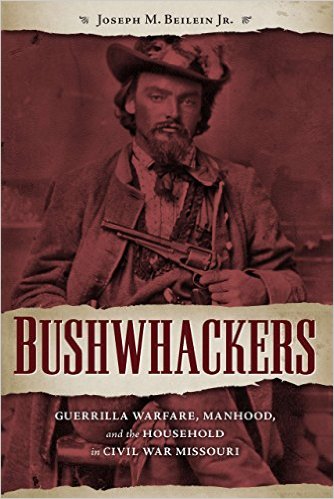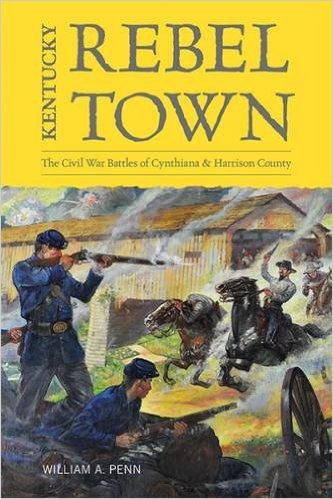Bushwhackers: Guerrilla Warfare, Manhood, and the Household in Civil War Missouri by Joseph M. Beilein, Jr. Kent State University Press, 2016. Cloth, IBSN: 978-1606352700. $34.95.
 With the passing of Michael Fellman in 2012, the contest opened for the next great contribution to our understanding of Missouri’s guerrilla war. One of the most likely suspects to eventually stand with Fellman is Joseph M. Beilein, Jr., of Penn State-Erie, the Behrend College. Beilein, who coedited The Civil War Guerrilla with Matthew C. Hulbert, offers this recasting of Missouri’s guerrilla experience through a modern historical lens.
With the passing of Michael Fellman in 2012, the contest opened for the next great contribution to our understanding of Missouri’s guerrilla war. One of the most likely suspects to eventually stand with Fellman is Joseph M. Beilein, Jr., of Penn State-Erie, the Behrend College. Beilein, who coedited The Civil War Guerrilla with Matthew C. Hulbert, offers this recasting of Missouri’s guerrilla experience through a modern historical lens.
In Bushwhackers, Beilein presents a twenty-first century treatment of a nineteenth century issue. Civil War studies have frequently steered clear of the more modern approaches and techniques, at least until they have been thoroughly tested in other fields. The result of these slower adoptions has been that the Civil War remains comfortably traditional with a few, well-placed examples of the kind of innovation more often seen in histories of gender, race, and class. This is a major reason why Civil War guerrilla studies are popular among readers, but still somewhat professionally marginalized.
Beilein seeks to push Civil War guerrilla studies closer to the professional mainstream by reinforcing their multifaceted nature. He does this by introducing readers to the powerful influence of the household and the kinship networks that tie it together. The household war concept emerged as a logical extension of gender studies during wartime. While most Civil War historians tend to focus their attention on battlefields and commanders, those who study the guerrilla are often looking at communities and social dynamics. Beilein astutely centers his study in the home, where he can investigate family influences and broad social connections alongside less appreciated elements like the food they ate and the determinism of status.
If this work has a weakness, it is in Beilein’s attempts to explain “the” guerrilla rather than seeing “many” guerrillas. On more than one occasion, readers are presented typicalities. He describes what guerrillas looked like, all the way down to the specific embroidered shirts and the stolen blue jackets that they wore (1). He notes that an image of Morgan Walker’s two story, stone house “gives us an idea of what the physical representation of the Southern household looked like” after noting that Walker “was wealthier than most”—that in itself making him atypical (17). The William Gregg family “was a representative example of a rebel household” with four slaves (16-17). These concerns can easily be overlooked as examples of literary license, but professional historians should avoid such generalizations as they invite refutation and thereby call into question the author’s more important contributions.
With these concerns noted, readers should know that Beilein’s book says many important things. It sits on the intellectual cutting edge of borderland scholarship, it introduces the newest interpretations in the field, and it fits some of the most recent scholarship into the borderland experience. In all, Beilein’s book should be read by everyone interested in Missouri’s turbulent Civil War experience, and it will certainly become a staple on the reading lists that help train the next generation of borderland scholars.
Brian D. McKnight, the author of Confederate Outlaw, is Professor of History and Founding Director of the Center for Appalachian Studies at the University of Virginia’s College at Wise.
